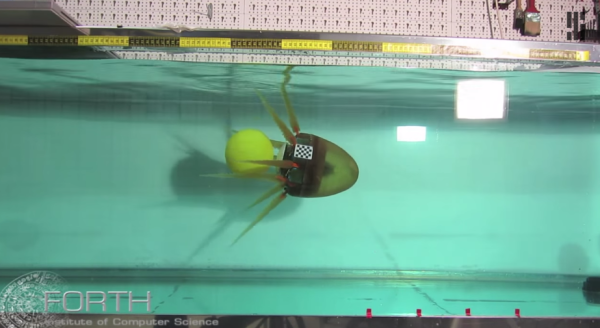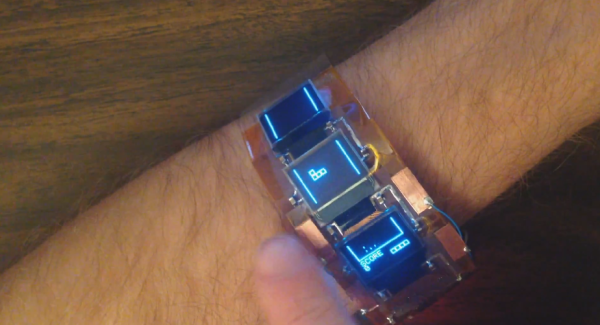Much of robotics has been advanced by recreating animals movements – Why reinvent the wheel when nature got it right first? But have you seen many aquatic creatures movements re-imagined with mechanical linkages? The Foundation for Research and Technology-Hellas (FORTH) has recently presented their robotic octopus at the International Conference on Intelligent Robots and Systems.
The eight armed (or is it legged?) roboctopus was based on of a real octopus which have a really cool method of propulsion which allows them to move at speeds of up to 40km/h. The researchers in Greece created slim silicon arms to recreate this movement, allowing their robot to propel itself at speeds of around 10cm/s — after adding webs to the arms, they were able to almost double its top speed to 18cm/s, or one-half its body length per second.
The cool thing about the bot is that other marine wild-life seem relatively unperturbed by it, which could open up many possibilities in underwater research!

















